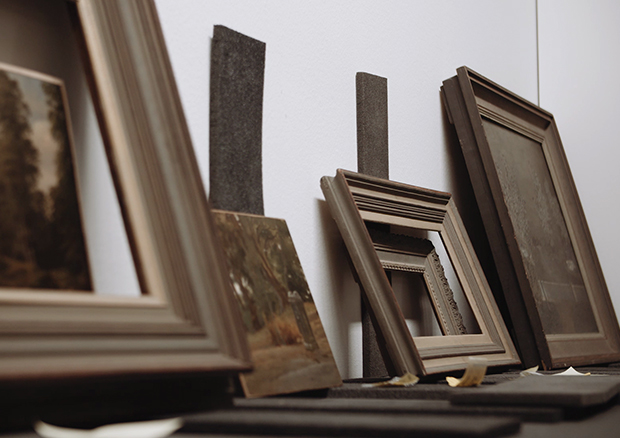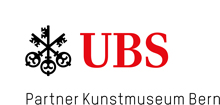The Cornelius Gurlitt Legacy
Rolf Nikolaus Cornelius Gurlitt (1932 – 2014), son of the German art-dealer, Hildebrand Gurlitt (1895 – 1956), passed away on 6 May 2014. Prior to his death, he had designated the Foundation of the Kunstmuseum Bern as his sole heir in his last will and testament (Cornelius Gurlitt bequest).
Online database THE GURLITT ESTATE
In November 2014 the Kunstmuseum Bern Foundation accepted the legacy and, together with the Federal Republic of Germany and the Free State of Bavaria, assumed the historic responsibilities for the estate, consisting of artworks that had belonged to Hildebrand Gurlitt.
The Cornelius Gurlitt estate consists of 1,600 artworks, mostly of nineteenth-century French paintings, drawings and graphic prints, plus outstanding works on paper by German Modernists. A special group of works originates from the family collection of artist Heinrich Louis Theodor Gurlitt (1812 – 1897) and that of Cornelia Gurlitt (1890 – 1919). Hildebrand Gurlitt had collected most of the artworks during the National Socialist rule in Germany (1933 – 1945). The works of the Gurlitt legacy are published in the database THE GURLITT ESTATE.
Nine artworks from the Cornelius Gurlitt Estate have been returned to the heirs of their rightful owners by March 2021.
Agreement on the Cornelius Gurlitt Legacy 2014
The framework for dealing with the Cornelius Gurlitt Legacy is laid out in the Agreement between the Federal Republic of Germany, the Free State of Bavaria and the Kunstmuseum Bern Foundation, November 2014 (Agreement 2014). The contract also assigns responsibility to provenance research and restitution of Nazi-looted art.
Fundamental research on the items suspected to be looted art was conducted by the “Schwabinger Kunstfund” Taskforce (2013 – 2015), the Gurlitt Provenance Research Project (2016 – 2017) and “Reviews, Dokumentation und anlassbezogene Forschungsarbeiten zum Kunstfund Gurlitt” (2018), at the behest of the Federal Government Commissioner for Culture and Media.
Upon conclusion of the Agreement 2014, the Kunstmuseum Bern assumed responsibility for provenance research. After establishing a Department for Provenance Research, the Kunstmuseum Bern was able to embark on this project.
In the Agreement 2014 the contractual partners agreed on a procedure for dealing with the Cornelius Gurlitt legacy artworks, and to their categorization upon completion of the research (“Provenienzampel”:traffic light system).
Red Category
For those artworks, which after fundamental provenance clarification have been identified as Nazi-looted art, the Kunstmuseum Bern has waived ownership rights, as set forth in the Agreement 2014. These works will become Fiduciary property of the Federal Republic of Germany as custodian, until they can be returned to their rightful owners or their descendants.
Green Category
Artworks, for which the suspicion of Nazi-looted art has been eliminated, remain property of the Kunstmuseum Bern.
Yellow Category
In cases where the suspicion of Nazi-looted art could neither be clearly eliminated nor confirmed, the Kunstmuseum Bern has the right, according to the Agreement 2014, to waive ownership rights or to transfer them to the Federal Republic of Germany; in such cases, there is a so-called “Wahlrecht”, right to waive ownership.
The Gurlitt Estate at the Kunstmuseum Bern
Extensive research into the Cornelius Gurlitt Estate has resulted in a system of differentiated categories of provenance-research findings.
After completion of the research in Germany, conducted through the “Schwabinger Kunstfund” Taskforce (2013 – 2015), the Gurlitt Provenance Research Project (2016 – 2017), and “Reviews, Dokumentation und anlassbezogene Forschungsarbeiten zum Kunstfund Gurlitt” (2018), the Kunstmuseum Bern assessed the results, according to its provenance categories. These same categories are used for the assessment of research-results in the investigations of so-called “Degenerate Art,” through the Kunstmuseum and the Forschungsstelle “Entartete Kunst” at Hamburg University (Project phase 1: 2019 – 2020, Project phase 2: 2020 – 2022).
The Kunstmuseum Bern’s categorization of provenance-research findings is intended to facilitate decisions about relinquishing ownership of particular works, and to contribute to a fair and mutually agreeable resolution with the claimants in still-unclarified provenance cases.
Definition of new provenance categories by the Kunstmuseum Bern
The evaluation of findings from basic provenance research is represented in a differentiated system as follows:
Exercising the right to choose
The decision by the Foundation of the Kunstmuseum Bern is based in part on an internationally recognised set of ethical principles for museums embraced by the Kunstmuseum Bern (Washington Principles, 1998; Terezín Declaration, 2009; ICOM Code of Ethics for Museums, 2004). The responsible handling of uncertain findings also plays a central role. Based on a comprehensive analysis of historical research as well as ethical and moral considerations, the Foundation of the Kunstmuseum Bern has reached the following decisions on 21 December 2020 and 5 November 2021:
- The Foundation of the Kunstmuseum Bern
will definitively accept the works in the “yellow-green” category. These works
will remain the property of the Kunstmuseum Bern.
- The Foundation of the Kunstmuseum Bern
will relinquish its ownership of the works in the “yellow-red” category and
transfer these works to the Federal Republic of Germany if there is no further
need for research, no claims are filed and no potential rightful owners are
evident.
- The Foundation of the Kunstmuseum Bern
will address troublesome claims or investigate potential claims to works in the
“yellow-red” category and explore options for amicable solutions. If the
findings are inconclusive or incomplete, the Foundation of the Kunstmuseum Bern
will strive to find a fair and just solution for the claimant and the institution
that takes both sides’ sense of justice into account and is open with respect
to potential resolutions. If this is successful, such works will not be
transferred to the Federal Republic of Germany, rather to the claimants or potential
rightful owners.
- In the event that the Foundation of the Kunstmuseum
Bern has assumed permanent ownership of a work of art for which further
provenance research undertaken by the Kunstmuseum Bern reveals that the work is
Nazi-looted art, such work shall be restituted to the rightful owners immediately.
- Transparency: The Foundation of the Kunstmuseum Bern publishes the works of Cornelius Gurlitt’s bequest in the online database THE GURLITT ESTATE. If research brings any new findings to light, these will be updated in the database on an ongoing basis and made internationally accessible. The bases and considerations for decision-making will be published in full.
Lending practice for artworks from the Cornelius Gurlitt Legacy, which as a result of the so-called “degenerate art” campaign (1937) were removed from german museum collections
The Kunstmuseum Bern gives priority-treatment to lending-requests from
museums and art collections for artworks which, as a result of the “Degenerate
Art” campaign by the German Reich, were removed, and which now belong to the Cornelius
Gurlitt Estate. A critical criterion for the loan is the conservation
findings for each individual work and the institution’s ability to comply with and
maintain conservation requirements.



